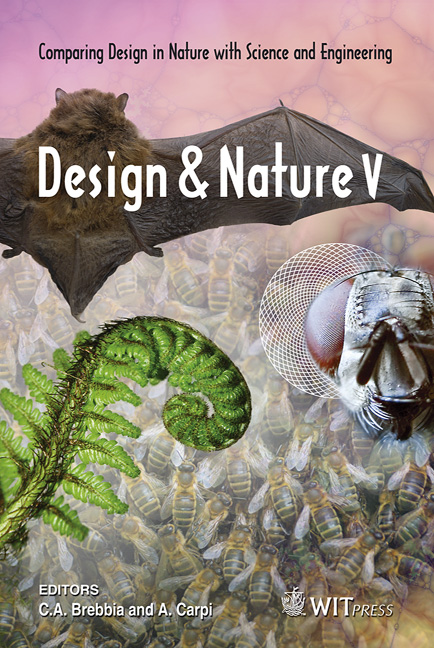Fruit Walls And Nut Shells As An Inspiration For The Design Of Bio-inspired Impact Resistant Hierarchically Structured Materials
Price
Free (open access)
Transaction
Volume
138
Pages
10
Page Range
421 - 430
Published
2010
Size
4,420 kb
Paper DOI
10.2495/DN100371
Copyright
WIT Press
Author(s)
R. Seidel, M. Thielen, C. Schmitt, A. Bührig-Polaczek, C. Fleck & T. Speck
Abstract
Until today the structuring of different types of fruit walls has only been used as an inspiration for packaging when seen from a biomimetic perspective. However, by detailed investigation of the Macadamia nut with its tough testa, Citrus maxima, which possesses a large spongy mesocarp and Cocos nucifera, which has a combination of a fibrous mesocarp and a tough endocarp, it becomes evident that those structures also provide excellent biological role models for impact and puncture resistant materials. Both Citrus maxima and Cocos nucifera are relatively heavy, lack any aerodynamic adaptation and share the same challenge of having to withstand impact from heights of more than 10 metres. By conducting high speed camera controlled free fall experiments of Citrus maxima from six metres high we could demonstrate a deceleration of the fruits of 3100m/s², which corresponds to 316g, without any visible damage to the fruit. An analysis using cyclic quasi static compression tests of the pericarp of Citrus maxima revealed that the material behaves constantly in good approximation after the first loading cycle. During the first cycle almost 75% of the energy is dissipated. The pericarp of Citrus maxima is highly visco-elastic, which causes the samples within one minute to recover 30% of their initial deformation caused by loading to 40% strain. The mesocarp of Citrus maxima is best described as an open pore foam with gradual increase in pore size. Understanding the principles
Keywords
energy dissipation, biomimetics, citrus maxima, cocos nucifera, Macadamia sp., gradual open pore foam





